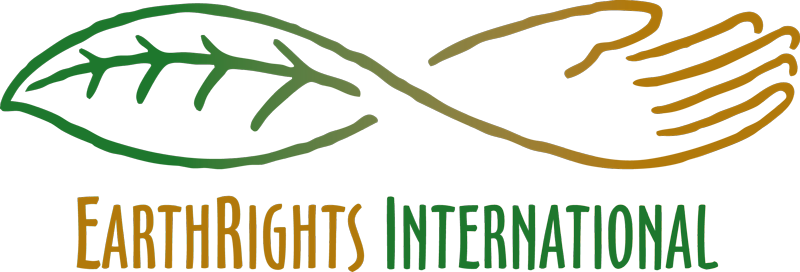SUMMARY
Communities in the Peruvian Amazon – especially indigenous communities – have been suffering from numerous oil spills from the Norperuano Pipeline for nearly 50 years. The pipeline is operated by the Peruvian government, through its state-owned oil company PetroPeru. Official statistics confirm at least 37 spills between 1996 and 2016 alone – nearly two per year – but the real number may be far higher.
In addition to directly contaminating the rivers and streams that communities depend on for drinking water and fish, the spills have left toxins such as heavy metals and probable carcinogens in surrounding soil, sediment, and water, leading to significant drops in crop yields and further affecting regional food security. Communities have also reported a number of health problems stemming from the contamination, including nausea, migraines, vomiting, stomach pain, skin rashes, and even miscarriages among pregnant women; tests have confirmed contaminants in blood and urine. Especially at-risk are women, nursing mothers, the elderly, and children, who may suffer long-term developmental damage.
In 2015 and 2016, the native communities and their representatives took legal action in Peruvian courts to hold the government accountable. After major new spills occurred in early 2016, EarthRights International joined with other groups to ask for interim remedies – known as precautionary measures – from the Inter-American Commission on Human Rights, on behalf of two particularly heavily affected native communities. The Commission granted these measures in December 2017, calling on the Peruvian government to ensure that the affected communities have access to adequate medical care, potable water, and a diet that is “nutritionally and culturally appropriate.” The decision also calls on the Peruvian state to carry out medical screenings to determine the level of contamination that affected community members have been exposed to, with the aim of then administering the necessary treatments. ERI continues to work to enforce and implement these precautionary measures.
EarthRights International
Instituto de Defensa Legal (IDL)
Coordinadora Nacional de Derechos Humanos (CNDDHH)
Asociación Interétnica para el Desarrollo de la Selva Peruana (AIDESEP)
Instituto de Defensa Legal del Ambiente y el Desarrollo Sostenible (IDLADS Peru)
Organización Regional de los Pueblos Indígenas del Oriente (ORPIO)
El Gobierno Territorial Wampis
Galo Vasquez Silva from the Federación de Comunidades Cocama Unidas del Marañón (FEDECUM)
Right to life. The oil spills pose a grave and imminent threat to the lives of members of the affected communities, who are already facing chronic health problems and malnutrition. The Peruvian state has failed to take adequate measures to mitigate the serious health risks posed by the communities’ exposure to extremely high levels of toxicity and lack of access to clean food and water.
Right to physical, mental, and moral integrity. The right of the affected communities to their personal integrity, which has been compromised by the spills and its debilitating impacts on their health, livelihoods, customs, trade, and ability to subsist.
Cultural and territorial rights. The grave situation also threatens the communities’ culture, ancestral territory, and indigenous identity, which are contingent on their relationship with the very natural resources that are being destroyed by the contamination.
Rights of the child. In addition to being especially vulnerable the effects of the oil contamination on health and nutrition, children in the affected communities have been exposed to exploitative, unsafe working conditions during oil clean-up efforts. According to reports, in at least one community, children as young as 7 years old worked collecting crude from polluted rivers without any protective gear, in response to an offer by Petroperu to buy barrels of oil back from anyone who collected it.
Right to equality before the law. Indigenous peoples are often relegated to the status of second-class citizens in Peru and throughout the world, and the experience has been no different for the various communities impacted by the spills. Both the Peruvian state and Petroperu failed to maintain properly the Norperuano Pipeline during its operation, and have since repeatedly failed to implement timely measures to mitigate the environmental harm and major health risks presented by the recurring disasters.
TIMELINE
1970
The Norperuano Pipeline is installed in the northern Amazon region of Peru, in the region of Loreto.
1996 – present
The Peruvian government documents 37 oil spills on the pipeline; independent sources put the number at 190.
2014
In June, a pipeline leak dumps over 1,600 barrels of crude oil in a forested area upstream from the indigenous community of Cuninico, killing off several tons of fish—which the community depends on both for subsistence and income—and contaminating the very river locals use for drinking, cooking, washing, and bathing.
In November, a massive spill of 7,800 barrels devastates the neighboring indigenous Kukuma community of San Pedro.
2015
The native communities of Cuninico, Nueva Esperanza, San Francisco and Nueva Santa Rosa submit a legal complaint in Peruvian court challenging the government’s failure to adequately respond to the 2014 spills.
2016
In January, the Regional Organization of the Indigenous Peoples of the Peruvian Amazon of Northern Peru (ORPIAN) files a lawsuit against three Peruvian governmental agencies.
In February, spills of 3,000 barrels of oil contaminate indigenous communities including Cuninico, prompting the Peruvian government to declare a public health emergency, and to order a shutdown of the pipeline.
Also in February, ORPIAN files another environmental complaint against PetroPeru for poor maintenance, failing to contain oil spills, and harm from contamination from the Norperuano Pipeline.
In March, ERI and others submit a request for precautionary measures to the Inter-American Commission, urging the Commission to require the Peruvian state to adopt necessary measures to protect the rights of members of the several communities impacted by the series of oil spills occurring in or near their territories.
In June, the Commission holds a thematic hearing on the impacts of oil spills in Peru; leaders and representatives of communities affected by the spills describe how recurring contamination over the last 20 years has negatively affected the health, nutrition, and overall well-being of the communities.
Also in June, yet another spill occurs, indicating that PetroPeru had continued using the pipeline without permission. Germán Velásquez Salazar, head of PetroPeru, resigns, and is charged with criminal environmental pollution.
In July, the indigenous federation ACODECOSPAT files a court action alleging violation of constitutional rights with respect to the November 2014 spill in San Pedro, demanding that the government remedy the environmental and social harms affecting the community.
In October, the Peruvian government expands the public health emergency to four entire river basins.
2017
In July, the Inter-American Commission visits three oil spill sites and three native communities affected by the spills.
In December, the Commission grants the request for precautionary measures, calling on the Peruvian state to carry out its obligations by ensuring that members of the affected communities have access to adequate medical care, potable water, and a diet that is “nutritionally and culturally appropriate.” The decision also calls on the Peruvian state to carry out medical screenings to determine the level of contamination that affected community members have been exposed to, with the aim of then administering the necessary treatments.






